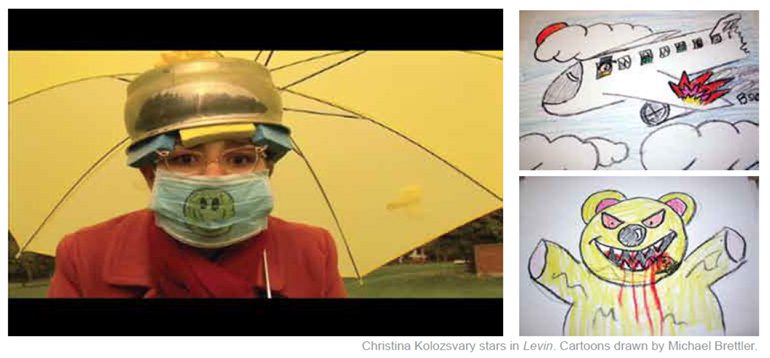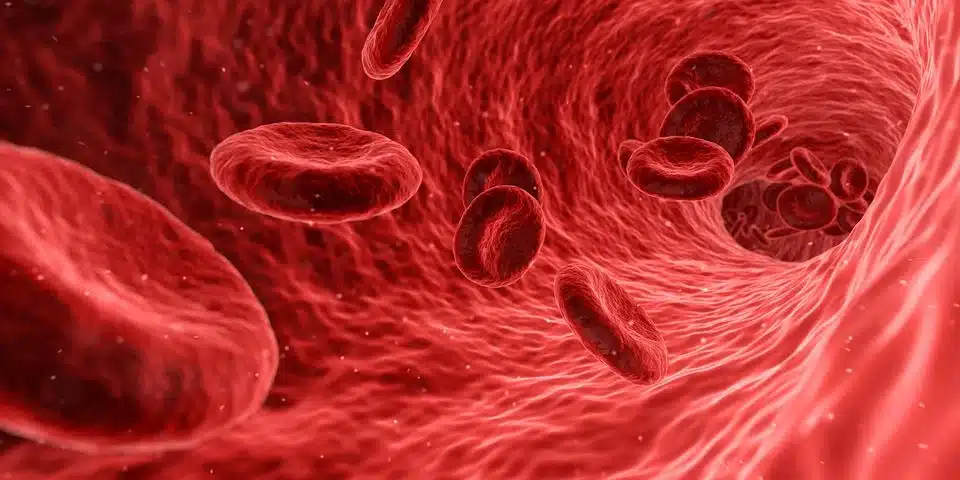#FlashbackFriday #FBF Do you remember our Community Spotlight with Michael Brettler?
Brettler Captures Introspective Tone and Child-Like Whimsy with ‘Levin’
Genuine Characters Trump Student-Level CG

While going into pre-production on a new project, Michael Brettler takes a moment to talk with StudentFilmmakers Magazine. He shares some of the challenges he faced and overcame during the making of his winning film, Levin: Maladies of Death.
Did any challenges come up while you were writing Levin: Maladies of Death?
Michael Brettler: I think that one of the largest problems I faced while writing Levin was the conceptualization of its very tone. The film is very introspective, sometimes more like a short story, novel form rather than what one expects from a film. You have this character, you display a world from her point of view, she reacts, learns, and hopefully changes. But it’s all thought and voiceover – two techniques that any film professor would hang you for even striving to use. My own professors did nothing but discourage me once the film was shot. ‘It’s too childish!’ they’d say. ‘It’s a weird narrative!’
But I persisted, probably because I knew that this was the first thing I ever made that really expressed my own artistic intention and personality. The voiceover, the thought process – it all worked wonders in the end because Levin was so surreal and childlike. Opposites attracted to formulate a distinct tone and environment. One that would end up working wonders. I guess this proves that while writing, your best judge really is yourself. Experienced professionals, professors, can give you loads of advice. Mend you. Break you. But in the end, you create your themes, the tones and style you work off of so well. If you think something is good, go for it. Use the techniques you’ve been told to trash. Break the rules. Your project will end up much more interesting. And most importantly, it’ll end up much more, well, you.
Could you share a tip or technique in relation to writing for the short form?
Michael Brettler: Working at various production companies, entering dozens upon dozens of festivals, I can honestly say that I’ve read a countless number of scripts, both feature length and short form. The problem with most short length films or screenplays, a horrible thing that everyone falls victim to at the start of their career, lies in idea rather than execution. People attain gigantic budgets, unbelievable FX work, costumes that would make your head spin – but most of them, or a fair number of them, seem to think that a good short story or short screenplay is merely made up by a good twist.
Although many films have succeeded based off of a wowing ending, every great story starts with great characters. The people that make up your world must go on some sort of emotional journey – both physical and mental – even if your film is only two minutes in length. This may seem like quite the burden, but festival juries usually appreciate and prefer interesting characters over student-level CGI. Present your readers, your eventual viewers, with something captivating, a journey of any sort, and no matter your likely budget, you will already have a head start over most other filmmakers.
Did any challenges come up in regards to camera work?
Michael Brettler: There were a lot of issues when it came to camera work. Sound work. Oh boy. We were using a pretty cheap Sony camcorder to film most of the project. It scared the hell out of me because many of my classmates had the money to shoot roll upon roll of super 16, project their images onto the largest of walls without even the slightest worry. I wasn’t so lucky on the technical end. My budget was around fifty dollars. Unbelievable, right? And most of the pocket cash was spent on random costume decals from the dollar store. Fun times! As far as the camera work goes, however, our technical limitations made us that much more persistent on getting the perfect angles, the perfect framing for every shot. If you notice, everything you see on screen has something to do with Levin – who she is, where she came from, who she becomes.
Instead of merely shooting for beauty, we shot, again, for character – that most important detail. Cleaning products, childish drawings abound – we hoped that without words, without sound, every potential viewer would be able to understand who our heroin was, what her journey comprised of – even by a simple close-up or PAN.
Sound was also an interesting thing to discover. As I made this film, I was really just learning the ins and outs of different modulators, editing bays, programs. It’s hard, because in any film, sound really is just as important as the image you are trying to convey. Especially for Levin. Her tone of voice, her sense of concern and fear – it was all very hard to discover and portray. Christina and I spent hours in the recording studio getting the voiceover set and pat. We worked things out in dozens of styles and abnormalities – gave me many choices, workable parts to cut up later on in the editing stage.
Finding the right ways to manipulate her voice, environmental background, through digital means was also quite the project. When entering film school, I never would have believed the ways you have to change a simple phrase to fit room tone point of tell. It’s quite interesting, actually.
What challenges came up in the editing room?
Michael Brettler: I’m not a big editor. Hell, I’m not even a little editor. My problem is that I fall in love with what I work with. I cut my film up, throw everything together to create a relatively good product. I’m not bad at editing, but at this point I lose all sense of meaning and creativity. I know that I have to go farther – rip shots apart, throw sequences out of order, pace things up. It just scares me, unnerves me to go the full distance. I think a lot of people have this problem.
Luckily, I have some good friends in my department, mates who helped me take my first step towards the complete mangling of my product – Maisha Baddoo, Brittany Bolger, I love you guys. Once there, I found it much easier to shift things around, build and rebuild a beautiful piece that went exactly where it needed to go.
Don’t get me wrong, though. As I said above, there are always people that try to discourage you. Professors, a few students tore me up for each consecutive draft of feed I turned in to portfolio review and critique. Their words scared me, sometimes pushed me away from running the full distance, so to speak. But in the end, I just had to ignore them. Sit in a dark room. Me and my product. Hack away and create, not what made them happy, but what made me content.
In the end, every part of production – writing, development, production, editing – they all converged to create the ultimate learning experience for me. Because of this, I look forward a great deal to future projects.
Join the Filmmakers Network or Update Your Profile!
networking.studentfilmmakers.com
Subscribe to StudentFilmmakers Magazine
StudentFilmmakers Magazine: Each issue addresses the needs of the five distinct phases of film and video making.





